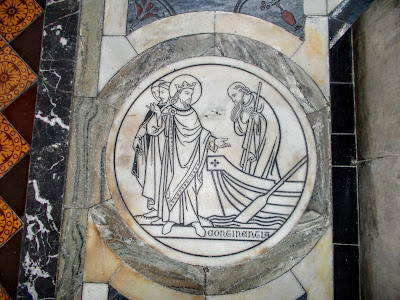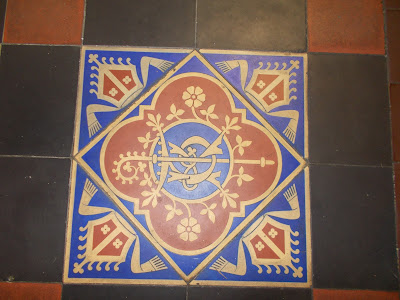On the afternoon of 12th January 1899 a storm arrived on the North Devon coast and wind speeds increase to force 8. In the early evening, the RNLI Lynmouth Lifeboat crew received a telegraph message from Porlock informing them that a ship called the Forrest Hall was rudderless and in distress in Porlock Bay and requested their assistance. Coxswain Jack Crocombe decided that it would be impossible to launch his twelve-oar lifeboat Louisa from Lynmouth, due to the high seas and then he announced to his surprised crew "We'll launch from Porlock". They were unable to send a telegraph message back to Porlock to tell them this because the wires had blown down.
A team of up to 100 people, including Jack Crocombe and 13 lifeboat crewmen, and 18 borrowed horses were soon assembled and they set off to drag Louisa on her carriage 13 miles overland. Their first challenge was the climb up Countisbury Hill - 300 metres in two miles and 1:4 in places. Richard Moore, the lifeboat's signalman, and half a dozen men had been sent ahead with pickaxes and shovels to widen the road. On the way up Countisbury Hill one of the wheels came off Louisa's carriage but they managed to put it back on.
Once the main party reached the top of Countisbury Hill, most of the volunteers turned back, leaving 20 men to haul the Louisa the rest of the way. She was 10 metres long and weighed 10 tons. At this time the road across the top of Exmoor was a muddy track. At one point it was so narrow that Louisa had to be taken off her carriage and dragged on skids because the road could not be widened. The carriage took a different route over the fields and re-joined them a mile further on. They also had to climb to a height of 420 metres above sea level and all the while it was raining and the gale continued to blow.
The team of men managed to successfully hold Louisa back when they were descending Porlock Hill (1:4 in places) but they had to break down part of someone's garden wall to get through.
They arrived in Porlock Weir at 6.30am on 13th January. Despite being very wet, tired and hungry, they immediately launched the Louisa and it took them an hour to row out to the Forrest Hall, which had anchored near Hurlstone Point. They stood by the Forrest Hall until two tugs arrived when it got light. The lifeboat crew helped get a rope from the tug to the ship and some of the lifeboatmen went aboard the Forrest Hall to help her crew raise their anchor. The Forrest Hall was then towed to Barry, accompanied by the Louisa, in case there were any problems. Thanks to their actions, all 17 or 18 crew members of the Forrest Hall survived.
They arrived in Barry at around 6pm and the crew of the Louisa were given dry clothes and food and accommodated in a hotel for the night. The following day they rowed back to Lynmouth, although they were towed part of the way by a steamer. Louisa's carriage was hauled back to Lynmouth by road.
The 13 crew members received awards of £5 each. The repair bill for the hire of horses and the rebuilding of walls was £118 17s: the owners of the Forrest Hall paid £75 of this.
The overland journey was re-enacted in 1999 by which time the roads had greatly improved but the weather hadn't.





























